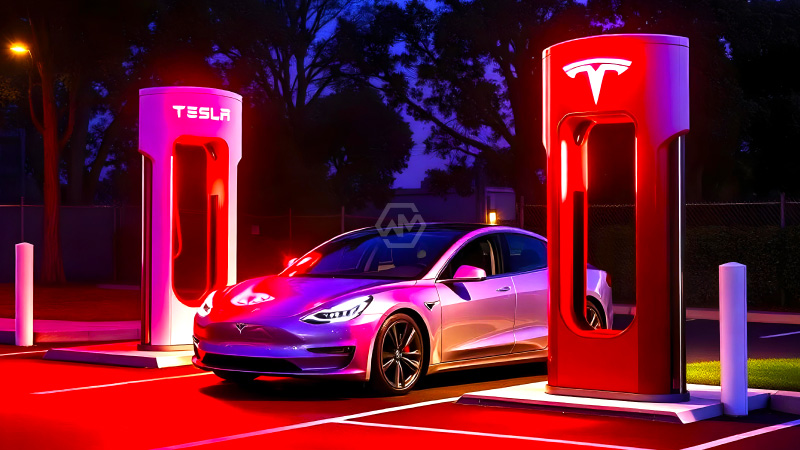- Tesla’s Supercharger network expansion slowed by 28% from May to August 2024 due to widespread layoffs.
- Government funding received for new chargers hasn’t prevented delays in opening more Supercharger stations.
- Tesla faces pressure to accommodate non-Tesla vehicles, but software and adapter challenges persist.
Tesla‘s Supercharger network expansion has slowed significantly following layoffs in April 2024, with a 28% drop in new charging ports from May to August compared to 2023.
The layoffs included the entire Supercharger team, throwing ongoing projects into disarray and halting development at several locations.
Tesla’s Charging Network Faces Challenges After Layoffs and Slower Expansion
Despite receiving millions of dollars in government funding for new installations in Maryland and Arizona, Tesla has struggled to keep up with the increased pressure to open its chargers to non-Tesla vehicles. Agreements with automakers like Ford and Rivian have already been forged, but distribution delays for plug-in adapters and software challenges have slowed the process. With fewer resources and a smaller team, Tesla is now focused on stabilizing and gradually expanding its charging network.
Tesla has continued to receive government support, with millions allocated for the expansion of its Supercharger network, particularly in states like Arizona and Maryland. However, even with funding, Tesla’s progress has been hampered by a reduced workforce and delayed construction at several sites. These delays have frustrated property owners who were in negotiations with Tesla at the time of the layoffs, creating uncertainty in the charging infrastructure’s future development.
In addition to challenges with the workforce, Tesla also faces the technical task of adapting its Superchargers for use by non-Tesla vehicles. Companies like Ford and Rivian have signed agreements to use Tesla’s chargers, but software issues and a slow rollout of the required plug-in adapters have caused delays. This has further complicated Tesla’s expansion plans as it navigates a new era of open-access charging, something crucial for maintaining its competitive edge.
CEO Elon Musk has assured customers that despite the delays, Tesla will continue to expand its Supercharger network. The company has committed to spending over $500 million to add thousands of new chargers by the end of 2024, but the path forward may be slower than anticipated. Tesla’s ability to adapt to these challenges will be key to maintaining its position as a leader in EV infrastructure.
While Tesla has long been a leader in electric vehicle charging infrastructure, the company now faces a critical test. How well it handles its workforce reductions and the challenge of expanding access to non-Tesla vehicles will determine its future success.
“Tesla actually has one of its biggest challenges in front of it since the Supercharger was first released.” – Nick Nigro, Founder of Atlas Public Policy



